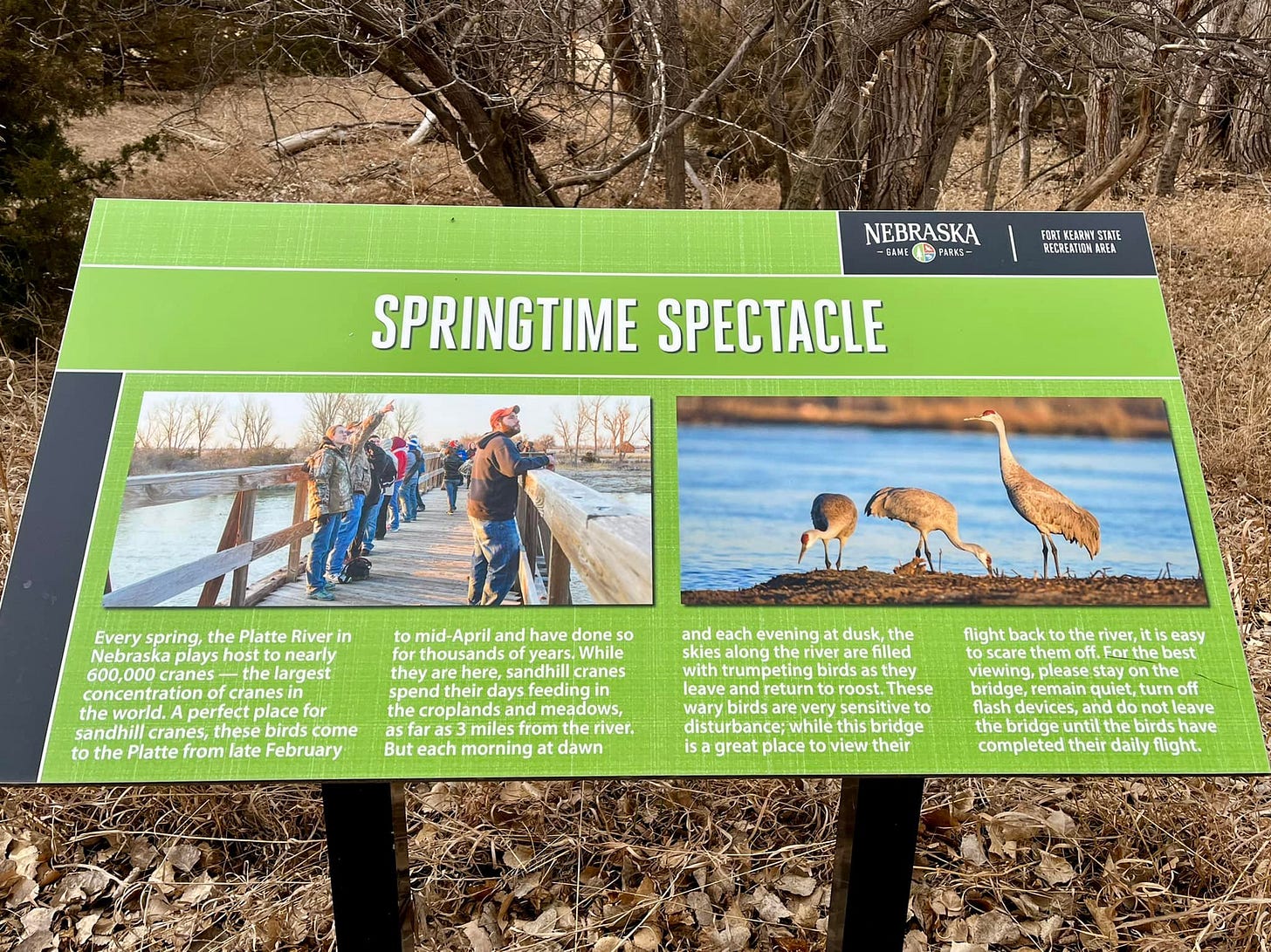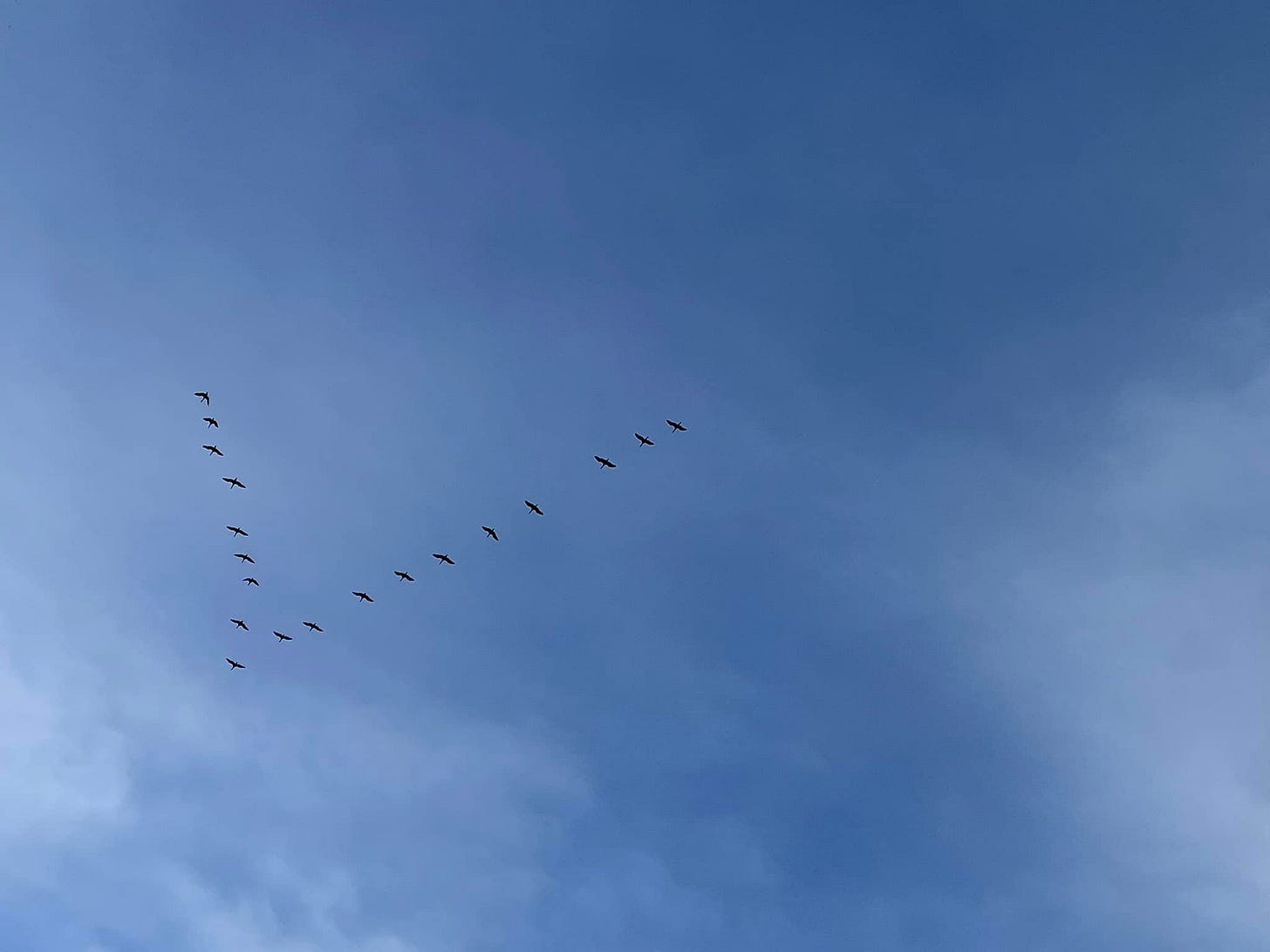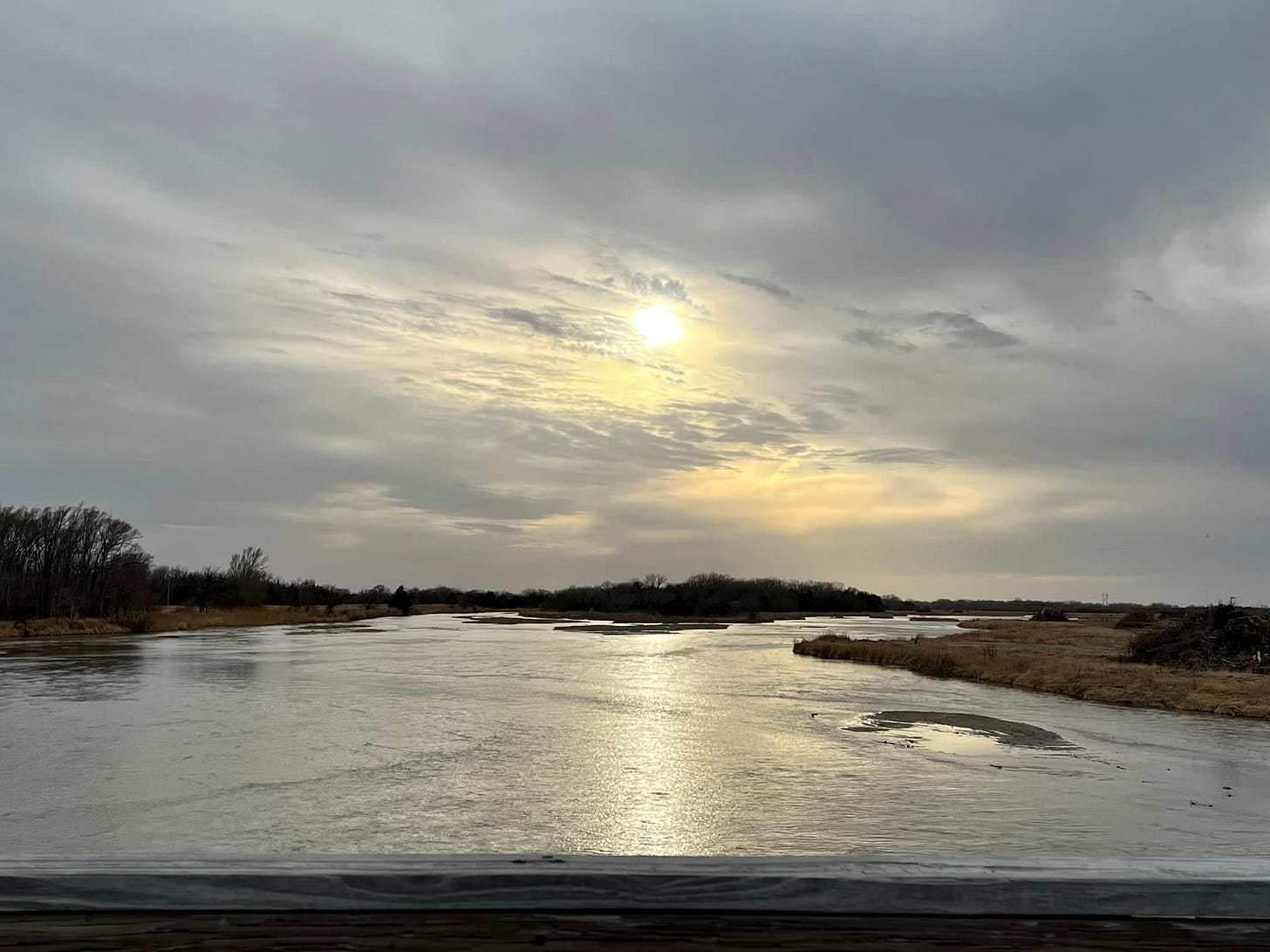When I lived in Michigan, I had the privilege of living across the street from a state park and a few miles away from Kensington Metropark. The parks were my salvation during the isolation of the pandemic. I tried to hike every day and more often than not, I’d see Sandhill Cranes.
In fact, they were such a common sight, here’s one in my front yard.
Sandhill Cranes are monogamous, and they mate for life. If a mate dies, the surviving crane will seek out a new mate. They can live as long as 20-40 years.
They typically spend winters in Texas, California, Arizona, New Mexico, and Mexico. When winter breaks, they head to their breeding grounds in Minnesota, Wisconsin, Michigan, Oregon, Idaho, and Alaska.
The female will lay one to three eggs, and both parents will take turns minding their nest for 29-32 days.
Their offspring are called colts. The colts will migrate with their parents until they are two, when they’ll search for their own mates.
When migrating, the Sandhill Cranes stop along the Platte River in Nebraska to rest and refuel for the remainder of their migration. So, when we were planning one of our trips north in March 2022, we jumped at the chance to witness the Sandhill Crane migration on our way through the state.
Hundreds of thousands of birds migrate through the hourglass-shaped corridor known as the “Central Flyway” every day from mid-February to mid-April. Peak viewing is in March.
According to the Nebraska Birding Guide, the central Platte River Valley is the most important stopover for Sandhill Cranes in the world. At night, the Platte River with its shallow water and sandbars offers a safe harbor for the migrating birds to roost.
The nearby cornfields and meadows provide an abundant food source for the cranes during the day. They’ll feed on corn kernels remaining from the fall harvest for a month to gain up to 20% of their body weight, which they’ll need for their long flight north to their breeding grounds.
The Crane Trust preserves and protects nearly 10,000 acres of critical habitat along the Platte River. Their Nature and Visitor Center offers an interactive flyway map and walking paths along the Platte River as well as tours. Other tours and viewing opportunities are offered through the Rowe Audubon Sanctuary and Dusty Trails.
Nearly half a million Sandhill Cranes can be seen every day during peak migration according to the Crane Counts, published weekly by The Crane Trust. You can also view crane activity on Audubon's Rowe Sanctuary's Crane Camera.
We chose a public viewing area along Ft. Kearney State Park’s Hike-Bike trail. The trail includes an old railroad bridge crossing over the Platte River, a great place for crane watching.
We even saw a pod of Pelicans fly by.
This 75-mile-long stretch of Platte River has been the rest and refueling station for the migrating cranes for thousands of years. Over 80% of the world's Sandhill Crane population relies on this area for their spring migration.
We got to the bridge around 5 pm. It felt deserted. Did we pick a bad day? Or maybe it wasn’t a good spot?
Then a couple of photographers showed up and staked their claim on the upriver side.
More people started arriving, waiting patiently and sharing sights they saw through their high-powered cameras and binoculars. Besides the pelicans, we saw an owl, a hawk, blue jays, and an eagle.
We may be turning into birders.
Now and then, some Sandhill Cranes would fly overhead, but not land.
The upriver side was a stunning display of light through the evening, and we saw six deer, one of which crossed the river. The crane action, however, was on the other side.
Soon the sky and horizon were filled with ribbons.
And they just kept coming…lining the far banks of the river creating a giant herd or sedge.
The upside of the river didn’t have many cranes but gave us a beautiful sunset.
After an evening of crane watching, we headed into Kearney and called it a night.
We arrived at the Ft. Kearney State Park’s Hike-Bike trail at 7 am the next morning. We just missed the first lift off.
This happened shortly after we arrived.
The cranes then fly off to local corn fields to feast and fatten up before they head to their Northern nesting grounds.
The previous evening had been fascinating. But the awe-inspiring liftoff the next morning was something we’ll never forget.
Afterward, we fueled up at a local gas station for our own journey North. This “Song of the Sandhill” statue was a sweet reminder of nature’s majesty we had just witnessed.
I’ll leave you with this link to one of the Sunday Morning’s signoffs as it beautifully captures the Sandhill Cranes’ time in Nebraska, and the magic of their migration.
























The birds are back! The migration is ON. I love waking up shortly before the sun rises to their screams. Best natural alarm clock in the universe. What a great piece! Here in Wisconsin, I'm in crane country.
This is so interesting Deb. My mom is a faithful watcher of the crane camera. She sends me pics and videos that she has taken with her phone of the cranes on her ipad. It's nice to have the rest of the story!